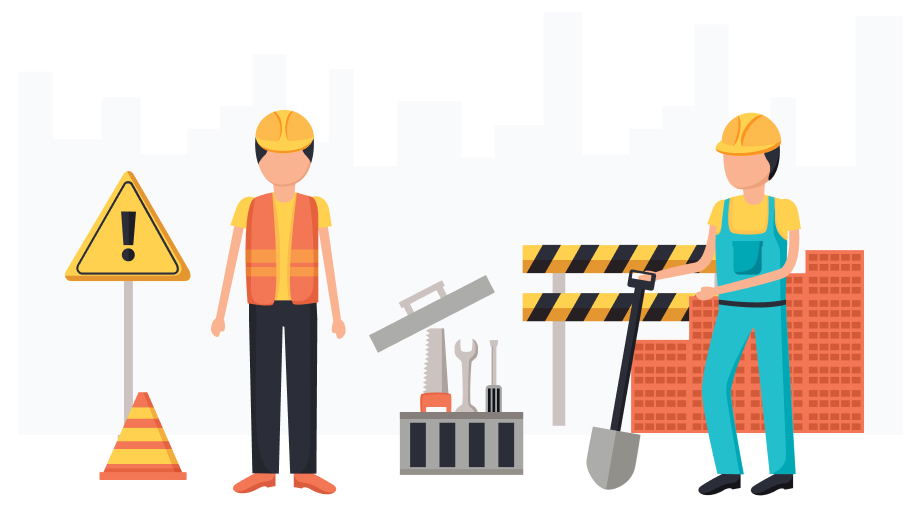The construction sector grapples with significant safety challenges. From risks of falling from heights, machinery-related accidents, and exposure to hazardous materials (such as asbestos and silica), construction site safety has severe threats to the lives of workers.
Data from 2022 highlights the dire construction site safety situation in the US construction industry. It revealed that it had the highest number of fatalities compared to any other sector, with 1,056 workers dying on the job. Additionally, about 1% of construction workers annually sustain fatal injuries.
The construction industry has long been at the forefront of innovation, with complex infrastructure projects that stretch the limits of engineering and design. Yet, historically, safety measures have not kept pace, leaving construction workers prone to accidents and injuries. These can jeopardize both workers and project schedules.
However, the landscape of construction safety has the potential for a transformative change thanks to digital innovation. By adopting advanced technologies, data analytics, and real-time monitoring, your construction business can significantly enhance worker safety management.
By adhering to established safety standards and implementing best practices, it’s possible to minimize risks and foster a safer working environment. In this article, we will explore the top five best practices to enhance your construction site safety and keep your workforce secure.
Best Practices to Improve Your Construction Site Safety
1. Prepare a site safety plan
Developing a comprehensive site safety plan is the foundational step in promoting safety at a construction workplace. Key elements of a construction site safety plan include:
- A detailed description of the project scope.
- Assessment of the physical site.
- Outline of the tasks to be carried out.
- Identification of potential safety risks associated with bot- the site and the tasks.
- Steps and measures to mitigate these risks.
- An overview of the company’s safety policies and practices.
The purpose of this plan is to ensure that all team members are fully aware of the project details, the expected outcomes, potential risks, and their specific responsibilities in maintaining a safe work environment.
2. Construction Site Safety Regular Training
Effective safety management on a construction site hinges on consistent training. It is crucial to provide comprehensive training for new hires or workers with limited construction experience. However, it is equally important to regularly refresh the training of seasoned construction workers to reinforce safety protocols.
Beyond regular training sessions, implementing safety stand-downs can significantly enhance workplace safety. These are scheduled events where employers and employees come together to discuss safety issues directly.
While sometimes conducted in response to incidents, safety stand-downs are also invaluable as a proactive measure. They serve as an opportunity for the project team to pause operations and focus on educating the workforce about specific risks or recent incidents, promoting awareness and preventive measures among all staff.
3. Prioritizing Innovation for Enhanced Safety
Innovation plays a pivotal role in advancing construction site safety. It involves thinking “outside the box” and developing new, more effective safety measures. Without the willingness of construction firms to allocate extra resources, the rate of accidents and injuries could be substantially higher. Investing in newer, technology-backed measures reduces accident rates.
These may include modern safety equipment, predictive maintenance, threat escalation workflows and safety apps for lone workers.
This commitment to innovation helps in continuously updating and refining safety protocols, ultimately leading to safer and more efficient work environments.
4. Collaborating with Your Insurance Provider
Contractors typically maintain multiple insurance policies to shield their business from financial setbacks due to errors or accidents on the jobsite. Since insurance providers benefit from minimizing claims, they are a valuable resource for enhancing jobsite safety. These providers are often equipped with the tools and insights necessary to help reduce workplace risks, which can also lead to lower insurance premiums.
Engaging actively with your insurance provider can bring about significant improvements in safety measures. They can offer tailored advice and recommend best practices based on industry standards and risk assessments. By leveraging their expertise, construction firms can optimize safety protocols and even foster a safer and more compliant workplace.
5. Regular feedback and updates
To foster a culture of safety that evolves and improves over time, it’s essential to prioritize continuous learning and improvement in safety practices. Encouraging worker feedback is crucial. Employees who are on the front lines often have valuable insights into potential safety improvements and hazards that might not be immediately obvious to management. Regularly analyzing incident reports allows for the identification of trends and areas needing attention, which can inform future safety measures.
Additionally, seeking opportunities for ongoing education is vital. This could include training sessions on the latest safety technologies, updates to regulatory requirements, or new methods in risk management. These educational initiatives should be integrated into the regular training schedule to ensure that all employees are up to date with the best practices and innovations in safety.
Conclusion
Ensuring construction site safety is crucial for protecting the well-being of workers, preserving the reputation of construction companies, and guaranteeing the overall success of projects.
Complying with OSHA standards and adopting these safety practices will safeguard your workers and promote a safety-first culture. This, in turn, boosts productivity and contributes to a more positive work environment.
By prioritizing safety, you can not only secure the health and safety of all parties involved but also reduce liabilities and avoid delays in project timelines. Investing in robust safety measures yields long-term benefits, resulting in superior project results and a stronger reputation within the industry.



